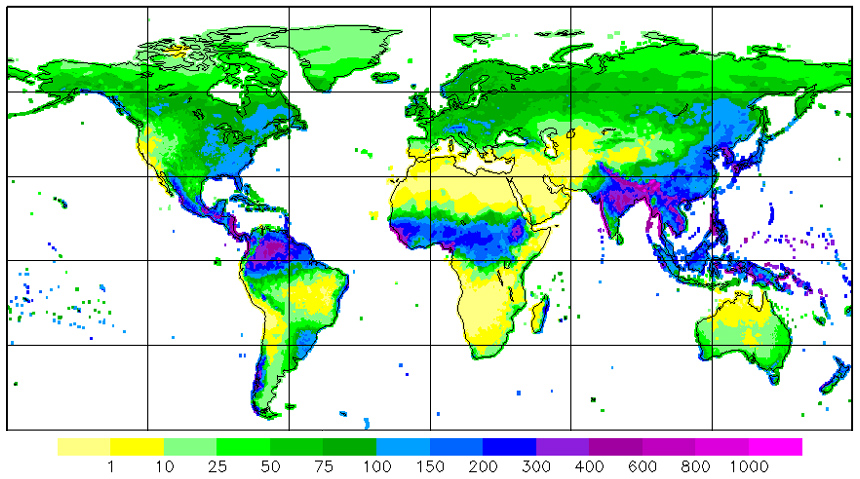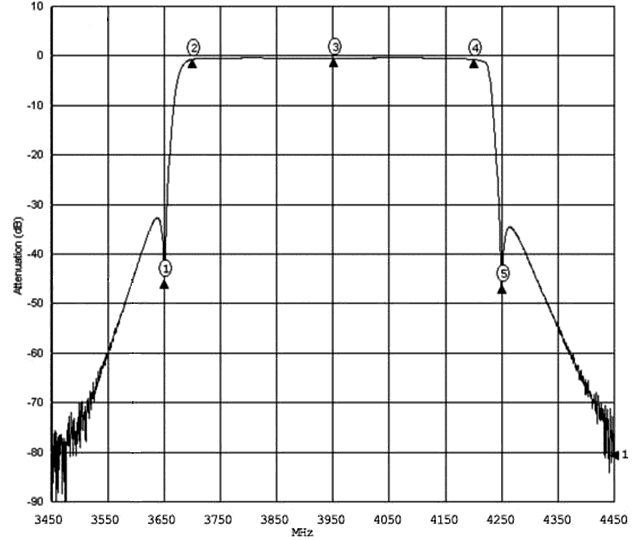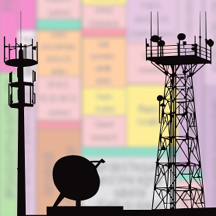Sunday 29 September, 2019, 18:29 - Spectrum Management, Satellites
A lot of countries are beginning to consider the use of what is known as 'C-band' for new 5G services. The C-band runs from 3400 - 4200 MHz and is a set of radio frequencies extensively used for satellite connections (and for some point-to-point fixed links and the odd point-to-multipoint network). The satellite uses connections fall into a number of categories:- Lifeblood links for remote areas (including some countries whose only international connection is via satellite such as Ascension Island).
- VSAT connections for businesses (i.e. banks and petrol stations) and for remote internet connections.
- Domestic television reception.

As can be seen from the map above (click for a bigger version), there is a swathe of the world, primarily in equatorial areas, where it really rains (those in blue and purple). In these areas, signals in other satellite frequency bands, such as Ku-band (11 GHz) and Ka-band (20 GHz) are absorbed so much by rain that when it pours, they become unreceivable but C-band being a lower frequency (4 GHz) does not. Using the band for 5G in countries where C-band is only lightly used is not impossible. Though 5G transmissions can wipe-out satellite reception in areas hundreds of kilometers from the 5G base stations, very careful planning of frequencies and site placements can lead to some solutions.
In countries, however, where there are hundreds of VSAT terminals, or thousands of domestic satellite receivers, the situation is more bleak. There is fundamentally no way that 5G networks and satellite receivers can share the same frequencies. The transmitter power of a satellite is not completely dissimilar to that of a 5G base station, but one is 40,000 kilometers away and the other may be 40 metres away. Clearly one will enormously overshadow the other.
The only way that the two services can therefore co-exist is to separate the 5G frequencies from those used for satellite reception.
 As there are no 'unused' satellite frequencies in the C-band, this means that regulators have to take a decision to slice up the band, taking spectrum away from satellites and giving it to 5G services and this is what many have done. Hong Kong, Cambodia, Singapore and the Philippines (to mention a few) have decided to use frequencies from 3400 - 3600 MHz for 5G services, and leave 3700 - 4200 MHz for satellite services. The gap in-between (3600 - 3700 MHz) is left as a guard-band, a kind of no-mans-land in which neither service has priority. This allows satellite receivers to be fitted with filters which allow signals above 3700 MHz through, whilst rejecting signals below 3600 MHz (see the example on the right).
As there are no 'unused' satellite frequencies in the C-band, this means that regulators have to take a decision to slice up the band, taking spectrum away from satellites and giving it to 5G services and this is what many have done. Hong Kong, Cambodia, Singapore and the Philippines (to mention a few) have decided to use frequencies from 3400 - 3600 MHz for 5G services, and leave 3700 - 4200 MHz for satellite services. The gap in-between (3600 - 3700 MHz) is left as a guard-band, a kind of no-mans-land in which neither service has priority. This allows satellite receivers to be fitted with filters which allow signals above 3700 MHz through, whilst rejecting signals below 3600 MHz (see the example on the right).In such a scenario, there is still potential for interference to the satellite services in two possible ways:
- strong signals from the 5G transmitters can overload the satellite receivers (even after the rejection provided by the filter); or
- unwanted emissions from the 5G transmitters on the frequencies being received by the satellites can cause interference.
 The solution to this, would be to fit filters to the 5G transmitters to reduce the unwanted emissions, but this costs the mobile operators and they are not keen to do so. In some cases they are not even able to do so. The use of 'massive MIMO' antennas means that the transmitters and antennas are incorporated into a single unit, inside which there is no room to fit a filter.
The solution to this, would be to fit filters to the 5G transmitters to reduce the unwanted emissions, but this costs the mobile operators and they are not keen to do so. In some cases they are not even able to do so. The use of 'massive MIMO' antennas means that the transmitters and antennas are incorporated into a single unit, inside which there is no room to fit a filter.Sharing of the C-band between satellite services and 5G networks therefore remains a thorny issue and it will be interesting to see how the problem is resolved. One option is, of course, to use a different band in areas where C-band satellite is in strong demand. The 2.6 GHz band (2500 - 2690 MHz) is currently built in to every 5G phone that is on the market and in the near future the millimetre wave bands (26 GHz and above) will form part of the ecosystem, so maybe the satellite operators will be left alone in their C-band spectrum in places where it never rains, but it pours.
